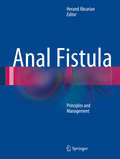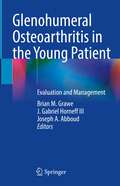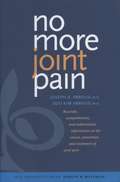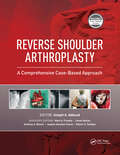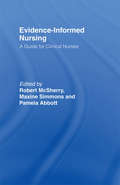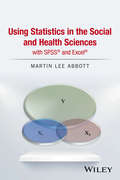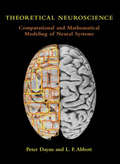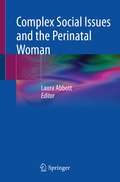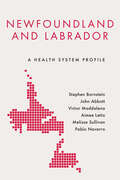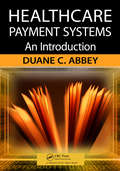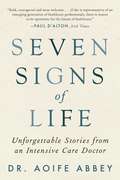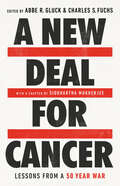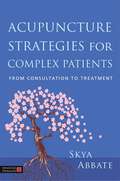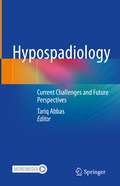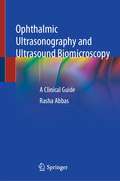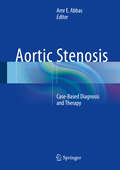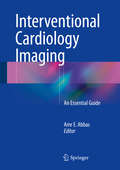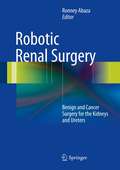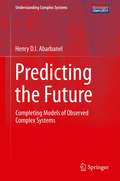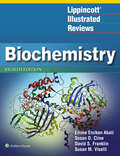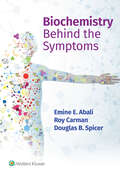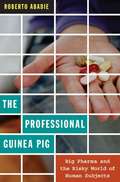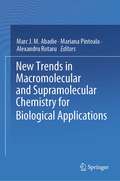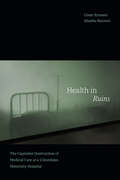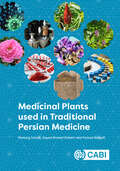- Table View
- List View
Anal Fistula: Principles and Management
by Herand AbcarianAnal Fistula: Principles and Management provides a comprehensive and state of the art review of major issues specific and related to the treatment of anal fistulas. An important section of the book covers the large number of alternative procedures which have been developed in the last two decades. Needless to say, none of these procedures have been uniformly successful, otherwise there would be no need for all the different operations. The book addresses each alternative procedure, discusses the benefits of each procedure, includes the most up-to-date results. Other important chapters cover the causes and failure of treatment and operations for fistulas. Also included is a Cochrane Review of all available randomized controlled trials with levels of evidence culled from the literature. Written by specialists in their respective fields, Anal Fistula: Principles and Management fills a void in available texts on a subject matter very commonly encountered by surgeons, physicians and specialists.
Glenohumeral Osteoarthritis in the Young Patient: Evaluation and Management
by Joseph A. Abboud Brian M. Grawe J. Gabriel HorneffThe management of glenohumeral arthritis in the young patient remains a challenging problem for the treating clinician. The activity demands seen in such patient populations require a unique understanding of what the goals of treatment are to ensure satisfied and sustainable outcomes. In addition, younger patients have a longer life expectancy and more active lifestyles, which can negatively impact the longevity of arthroplasty implants that are traditionally used in the older patient population. As such, the discovery and implementation of novel and anatomy preserving techniques continue to evolve to meet the demand of younger patients without compromising their outcomes. This practical text serves to educate the treating clinician on how to recognize and categorize glenohumeral osteoarthritis in young patients and offers insight into the various operative and non-operative treatment options. Opening chapters examine the prevalence and burden, etiology and evaluation of the condition, followed by chapters discussing the current non-invasive and non-operative approaches to treatment, such as injection therapy. The main complement of chapters are detailed descriptions of surgical approaches, from arthroscopy and cartilage reconstruction to total and reverse shoulder arthroplasty, stemless approaches and arthrodesis. A final chapter expands on future management strategies. Radiographs and intraoperative photos are provided to enhance the text.Presenting the state of the art for this increasingly common condition, Glenohumeral Osteoarthritis in the Young Patient is an ideal resource for orthopedic surgeons and sports medicine specialists alike.
No More Joint Pain
by Joseph A. Abboud Soo Kim AbboudArthritis is a major cause of joint pain, but there are myriad others. This is the first book to provide everyday readers with a comprehensive guide to musculoskeletal disease and pain, from degenerative arthritis in the elderly to common sports injuries in young athletes. Dr. Joseph A. Abboud and Dr. Soo Kim Abboud, offer clear, medically based information on the most common diseases to affect the musculoskeletal system. They explain each major joint in detail and draw on their extensive experience with patients to offer sound advice on treatment and prevention options. They also discuss the pros and cons of alternative medicine techniques, and they assess which of the newest technologies really work. With one hundred illustrations, specific instructions for beneficial exercises, and a helpful glossary, this manual is just what the doctor ordered for weekend warriors and anyone else who is contending with joint pain.
Reverse Shoulder Arthroplasty: A Comprehensive Case-Based Approach
by Joseph AbboudFocused on the rapidly expanding field of reverse shoulder arthroplasty, Reverse Shoulder Arthroplasty: A Comprehensive Case-Based Approach is a detailed guide for shoulder surgeons. As this type of arthroplasty continues to grow globally, this text fills the need for a comprehensive and current book on this topic. This text is edited by Dr. Joseph Abboud, alongside co-editors Drs. Frankle, Romeo, Sanchez-Sotelo, Neyton, and Tashjian. With dozens of leading orthopedic shoulder surgeons as contributors, Reverse Shoulder Arthroplasty: A Comprehensive Case-Based Approach serves the needs of a broad audience of surgeons. This includes fellowship-trained shoulder surgeons, sports surgeons, generalists, traumatologists, hand surgeons, and orthopedic oncologists. The unique, case-based approach highlights the current and historic principles of reverse shoulder arthroplasty. Important featured topics in Reverse Shoulder Arthroplasty include: Relevant anatomy, indications, and surgical approaches Theory of design and its practical applications: materials used, base plate design, glenospheres, and humeral stems Primary reverse shoulder arthroplasty: RSA for several different indications, how experts perform the operation, and techniques utilized in certain cases Revision reverse shoulder arthroplasty: step-by-step approach, evaluation of infection, instability, managing bone loss, and more Miscellaneous topics: various approaches to rehabilitation, salvage options, and non-arthroplasty options for the rotator cuff deficient shoulder Video website access is included with purchase, providing additional audio-visual support to theories and principles discussed in each chapter by the world’s leading experts.Reverse Shoulder Arthroplasty: A Comprehensive Case-Based Approach is a comprehensive and current guide intended to assist all levels of shoulder surgeons. This go-to resource will be a foundational asset to any surgeon in this expanding field.
Evidence-Informed Nursing: A Guide for Clinical Nurses
by Pamela Abbott Robert McSherry Maxine SimmonsThis introductory text to evidence-based practice provides nurses and other health professionals with a clear idea of why they should use research information as a basis for high-quality patient care and how they should use that information in the clinical setting. In a logical progression which helps the student build knowledge systematically the text looks at:*the rationale for evidence-based care*what research is and approaches to it*the benefits of research to clinical practice*critical appraisal skills*reflective practice and decision-making*how to put research into practice*the importance of research disseminationA summary of essential points to remember is included at the end of each chapter and the text is firmly grounded in the clinical context. This book provides an indispensible reference guide suitable for use at all levels of training and practice.
Using Statistics in the Social and Health Sciences with SPSS and Excel
by Martin Lee AbbottProvides a step-by-step approach to statistical procedures to analyze data and conduct research, with detailed sections in each chapter explaining SPSS® and Excel® applications This book identifies connections between statistical applications and research design using cases, examples, and discussion of specific topics from the social and health sciences. Researched and class-tested to ensure an accessible presentation, the book combines clear, step-by-step explanations for both the novice and professional alike to understand the fundamental statistical practices for organizing, analyzing, and drawing conclusions from research data in their field. The book begins with an introduction to descriptive and inferential statistics and then acquaints readers with important features of statistical applications (SPSS and Excel) that support statistical analysis and decision making. Subsequent chapters treat the procedures commonly employed when working with data across various fields of social science research. Individual chapters are devoted to specific statistical procedures, each ending with lab application exercises that pose research questions, examine the questions through their application in SPSS and Excel, and conclude with a brief research report that outlines key findings drawn from the results. Real-world examples and data from social and health sciences research are used throughout the book, allowing readers to reinforce their comprehension of the material. Using Statistics in the Social and Health Sciences with SPSS® and Excel® includes: * Use of straightforward procedures and examples that help students focus on understanding of analysis and interpretation of findings * Inclusion of a data lab section in each chapter that provides relevant, clear examples * Introduction to advanced statistical procedures in chapter sections (e.g., regression diagnostics) and separate chapters (e.g., multiple linear regression) for greater relevance to real-world research needs Emphasizing applied statistical analyses, this book can serve as the primary text in undergraduate and graduate university courses within departments of sociology, psychology, urban studies, health sciences, and public health, as well as other related departments. It will also be useful to statistics practitioners through extended sections using SPSS® and Excel® for analyzing data. Martin Lee Abbott, PhD, is Professor of Sociology at Seattle Pacific University, where he has served as Executive Director of the Washington School Research Center, an independent research and data analysis center funded by the Bill & Melinda Gates Foundation. Dr. Abbott has held positions in both academia and industry, focusing his consulting and teaching in the areas of statistical procedures, program evaluation, applied sociology, and research methods. He is the author of Understanding Educational Statistics Using Microsoft Excel® and SPSS®, The Program Evaluation Prism: Using Statistical Methods to Discover Patterns, and Understanding and Applying Research Design, also from Wiley.
Theoretical Neuroscience: Computational and Mathematical Modeling of Neural Systems (Computational Neuroscience Series)
by Laurence F. Abbott Peter DayanTheoretical neuroscience provides a quantitative basis for describing what nervous systems do, determining how they function, and uncovering the general principles by which they operate. This text introduces the basic mathematical and computational methods of theoretical neuroscience and presents applications in a variety of areas including vision, sensory-motor integration, development, learning, and memory. The book is divided into three parts. Part I discusses the relationship between sensory stimuli and neural responses, focusing on the representation of information by the spiking activity of neurons. Part II discusses the modeling of neurons and neural circuits on the basis of cellular and synaptic biophysics. Part III analyzes the role of plasticity in development and learning. An appendix covers the mathematical methods used, and exercises are available on the book's Web site. <P><P><i>Advisory: Bookshare has learned that this book offers only partial accessibility. We have kept it in the collection because it is useful for some of our members. Benetech is actively working on projects to improve accessibility issues such as these.</i>
Complex Social Issues and the Perinatal Woman
by Laura AbbottPursuing a multidisciplinary approach, this book demonstrates the best quality care for pregnant women and new mothers who may have complex social needs. This book will benefit all health and social care professionals working in women’s health, while also providing a valuable reference guide for maternity departments. The latest Mothers and Babies: Reducing Risk through Audits and Confidential Enquiries across the UK (MBRRACE-UK) demonstrates the consequences that having multiple complexities has and the need to ensure that susceptible groups receive personalised, appropriate care and meeting the needs of all women is urgent and essential. This book brings together a blend of health and social care professionals, experts by experience and the charity third sector. All have expertise in caring for and supporting perinatal women with issues that may affect their health and the type of care they require. Through our collective writing, we provide a paradigm for partnership working and hope to have strengthened voices by highlighting women’s experiences and the importance of third sector partnerships, working in tandem with women who are experts by experiences and bringing health professionals together. In combination with recommendations from specialists in the field, we have offered a unique mix of compassion and evidence-based guidance. From substance abuse, domestic violence and HIV to experiences of Black, Asian and Ethnic Minorities, homelessness, women seeking asylum and women in prison, we have addressed a range of current issues and provided essential information and opportunities to reflect. Each chapter invites the reader to step into the shoes of the perinatal woman. Through our collective writing, we provide a paradigm for partnership working and hope to have strengthened voices by highlighting diverse experiences. We have looked at how using a trauma informed approach can be applied universally to care for all women and learn from charities such as Birth Companions, the 4M project and the Salamander Trust, how different approaches may directly impact women’s care in a positive and holistic way. An overarching aim of our book has been to find ways to deliver multi-agency continuity of care, whilst being aware of bias, professional responsibilities and an understanding how we can take a holistic approach - crucial for attaining excellence in 21st century maternity care provision.
Newfoundland and Labrador: A Health System Profile (Provincial and Territorial Health System Profiles)
by John Abbott Stephen Bornstein Victor Maddalena Aimee Letto Melissa Sullivan Pablo NavarroThere is not, and has never been, a single Canadian health system. Part of a series on the health systems of Canada’s provinces and territories, Newfoundland and Labrador: A Health System Profile provides a critical analysis of how the single-payer health care system has been implemented in the country’s youngest province. Examining the way the province’s health services are organized, funded, and delivered, the authors focus on the challenges involved in providing effective health care in a setting characterized by a large, decentralized territory; a small population, much of which is widely distributed in a large number of rural communities and small towns; and comparatively limited fiscal capacity and health human resources. Drawing on maps, figures, and collected data, this book documents the hesitant and limited ways in which Newfoundland and Labrador has sought to deal with the challenges and difficulties that the system has experienced in responding to recent changes in demography, economics, and medical technology.
Healthcare Payment Systems: An Introduction
by Duane C. AbbeyHealthcare Payment Systems: An Introduction provides a complete introduction to healthcare payment systems. Written by Duane Abbey, one of the nation‘s leading experts and most sought out consultants on payment systems, this volume makes the monumental task of medical reimbursement approachable and manageable. Covering the fundamentals and terminology needed to understand this discipline, and the strategies needed to master it, Dr. Abbey will help you begin to develop the solid core of skills and knowledge needed to confidently approach payment systems as tools to use rather than hazards to avoid -- tools that will lead to improved revenue cycles and higher levels of profitability.
Seven Signs of Life: Unforgettable Stories from an Intensive Care Doctor
by Dr. Aoife AbbeyFor Readers of Paul Kalanithi’s When Breath Becomes Air, an Intensive Care Doctor Reveals How Everyday Emotions Are Taken to Extremes in the ICU Dr. Aoife Abbey takes us beyond the medical perspective to see the humanity at work inside our hospitals through the eyes of doctors and nurses as they witness and experience the full spectrum of human emotion with every shift. It is their responsibility to mitigate the grief of a family in mourning, calm a patient about to die, and confront their own fear of failure when lives are on the line. Whether they're providing hospice care, tending to victims of car accidents or violent attacks, determining the correct treatment for someone displaying signs of a heart-attack or stroke, and managing staff, stress is a doctor's number one companion. Cycling through the whirlwind of emotion that accompanies every case isn’t only exhausting—it can be fatal. Told throughseven key emotions—fear, grief, joy, distraction, anger, disgust, and hope—Seven Signs of Life opens the door, and heart, of the hectic life inside a hospital to reveal what it means to be alive and how it feels to care for others.
A New Deal for Cancer: Lessons from a 50 Year War
by Abbe R. Gluck and Charles S. FuchsAn unprecedented constellation of experts—leading cancer doctors, policymakers, cutting-edge researchers, national advocates, and more—explore the legacy and the shortcomings from the fifty-year war on cancer and look ahead to the future.The longest war in the modern era, longer than the Cold War, has been the war on cancer. Cancer is a complex, evasive enemy, and there was no quick victory in the fight against it. But the battle has been a monumental test of medical and scientific research and fundraising acumen, as well as a moral and ethical challenge to the entire system of medicine. In A New Deal for Cancer, some of today&’s leading thinkers, activists, and medical visionaries describe the many successes in the long war and the ways in which our deeper failings as a society have held us back from a more complete success.Together they present an unrivaled and nearly complete map of the battlefield across dimensions of science, government, equity, business, the patient provider experience, and more, documenting our emerging understanding of cancer&’s many unique dimensions and offering bold new plans to enable the American health care system to deliver progress and hope to all patients.
Acupuncture Strategies for Complex Patients: From Consultation to Treatment
by Skya AbbateA textbook on planning treatment strategy for advanced acupuncture students and new practitioners. With clear illustrations, chapter summary charts and template patient handouts, this book takes an integrative approach to diagnosis and practice and provides insightful recommendations. Covers advanced techniques including bloodletting and gua sha.
Hypospadiology: Current Challenges and Future Perspectives
by Tariq AbbasAn increased incidence of hypospadias is found globally, and the current management techniques and research studies of hypospadiology face significant challenges and limitations. This book sheds light on the recent struggles encountered in hypospadias-related clinical practice and research methodologies. Various writings were incorporated by people on different disciplines linked to the overall phases of diagnosis and care of hypospadias patients. Special attention is given to new perspectives from different interrelated disciplines trying to overcome these obstacles. This book fills in a void in the new related discoveries traditionally given scant consideration in the currently dominated literature. It provides a useful source for the recent updates, ongoing controversies, and future research trajectories in hypospadiology, which benefits pediatric, plastic, reconstructive, and urology surgeons and trainees and helps examiners focus on updated materials.
Ophthalmic Ultrasonography and Ultrasound Biomicroscopy: A Clinical Guide
by Rasha AbbasThis book provides a visual overview of how to master ultrasonography and ultrasound biomicroscopy techniques. Updated ultrasonic information is included in a simple brief way, featuring didactic points, with a variety of documented scans and illustrated lines underneath for more clarification. Each pathology is accompanied with several scans of different findings to give more information of distinct detections.Ophthalmic Ultrasonography and Ultrasound Biomicroscopy: A Clinical Guide examines many clinical complexities with possible solutions when performing and interpreting ultrasound while also breaking down information for easier intake. The clinical cases are from a specialist eye hospital where many complicated cases are treated, giving a unique insight for the reader to understand treatment for a variety of cases. The book also emphasises the importance of everyday cases with further explanation whilst utilising a diversity of pictures and labels.
Aortic Stenosis: Case-Based Diagnosis and Therapy
by Amr E. AbbasWith the advent of less invasive treatments for aortic stenosis including percutaneous and apical replacement, more patients are being offered this technology. As such, determining the true severity of aortic stenosis is becoming paramount. Many clinical scenarios occur where the area and gradient estimates of severity do not match. This book will present case by case examples of different patients with a wide variety of aortic stenosis. It will assist cardiologists in identifying patients with true aortic stenosis who may benefit from valve replacement. It will also highlight the role and advent of new technology as the role of CTA, MRI, and 3D echo for diagnosis and TAVR and mini surgery for treatment. The audience will range from clinical cardiologists,imaging cardiologists and interventionalists alike.
Interventional Cardiology Imaging
by Amr E. AbbasInterventional cardiology has transitioned from angiographic subjective analysis of stenosis severity into assessment of plaque characteristics and objective assessment of stenosis severity. The evolution of novel interventional imaging modalities is progressively altering our understanding of coronary artery disease diagnosis and prognosis. This book will be an essential companion to assist interventional cardiologists in better assessing patients with Coronary Artery Disease. It will encompass and review all interventional imaging modalities and provide guidance for interventional cardiologists to use these modalities.
Robotic Renal Surgery
by Ronney AbazaRobotic Renal Surgery: Benign and Cancer Surgery for the Kidneys and Ureters provides a comprehensive review of the role of and technical considerations regarding robotic surgery for conditions of the kidney and associated conditions of the upper urinary tract. In addition to serving as a reference regarding indications, preoperative and postoperative management, complications, and evidence-based outcomes, this text also serves as a practical guide for surgeons in how to perform the complete array of robotic kidney and upper tract surgery. Included are detailed descriptions of positioning, instrumentation, and surgical steps for the surgeon newly adopting robotic surgery or for those refining their techniques. All chapters are written by recognized and published experts in the various techniques, creating an authoritative text on the subject. Robotic Renal Surgery: Benign and Cancer Surgery for the Kidneys and Ureters will be of great value to urologists, robotic surgeons, fellows in urologic oncology or endourology as well as urology residents in training and surgical nurses and other surgery team members involved in these procedures.
Predicting the Future
by Henry AbarbanelThrough the development of an exact path integral for use in transferring information from observations to a model of the observed system, the author provides a general framework for the discussion of model building and evaluation across disciplines. Through many illustrative examples drawn from models in neuroscience, geosciences, and nonlinear electrical circuits, the concepts are exemplified in detail. Practical numerical methods for approximate evaluations of the path integral are explored, and their use in designing experiments and determining a model's consistency with observations is explored.
Lippincott Illustrated Reviews: Biochemistry (Lippincott Illustrated Reviews Series)
by Emine E Abali Susan D Cline David S Franklin Susan M ViselliPraised by faculty and students for more than two decades, Lippincott® Illustrated Reviews: Biochemistry is the long-established go-to resource for mastering the essentials of biochemistry. This best-selling text helps students quickly review, assimilate, and integrate large amounts of critical and complex information, with unparalleled illustrations that bring concepts to life. Like other titles in the popular Lippincott® Illustrated Review Series, this text follows an intuitive outline organization and boasts a wealth of study aids that clarify challenging information and strengthen retention and understanding. This updated and revised edition emphasizes clinical application and features new exercises, questions, and accompanying digital resources to ready students for success on exams and beyond.
Biochemistry Behind the Symptoms
by Emine E. Abali Roy Carman Douglas SpicerBiochemistry Behind the Symptoms takes a problem-based approach to understanding and applying biochemistry for superior clinical outcomes. Organized around the common symptoms encountered by clinicians, this engaging text clarifies the connections between foundational science and clinical manifestations to help users form confident diagnoses throughout their clerkship and beyond. Each chapter explores the biochemical concepts behind underlying causes and demonstrates their ties to presenting symptoms through 5 realistic patient cases. Accompanying questions encourage discussion and guide users in building accurate differential diagnoses. Ideal for peer-to-peer learning environments or independent study, this practical approach strengthens users’ application of fundamental knowledge and ensures the long-term retention essential to clinical success.
The Professional Guinea Pig: Big Pharma and the Risky World of Human Subjects
by Roberto AbadieThe Professional Guinea Pig documents the emergence of the professional research subject in Phase I clinical trials testing the safety of drugs in development. Until the mid-1970s Phase I trials were conducted on prisoners. After that practice was outlawed, the pharmaceutical industry needed a replacement population and began to aggressively recruit healthy, paid subjects, some of whom came to depend on the income, earning their living by continuously taking part in these trials. Drawing on ethnographic research among self-identified "professional guinea pigs" in Philadelphia, Roberto Abadie examines their experiences and views on the conduct of the trials and the risks they assume by participating. Some of the research subjects he met had taken part in more than eighty Phase I trials. While the professional guinea pigs tended to believe that most clinical trials pose only a moderate health risk, Abadie contends that the hazards presented by continuous participation, such as exposure to potentially dangerous drug interactions, are discounted or ignored by research subjects in need of money. The risks to professional guinea pigs are also disregarded by the pharmaceutical industry, which has become dependent on the routine participation of experienced research subjects. Arguing that financial incentives compromise the ethical imperative for informed consent to be freely given by clinical-trials subjects, Abadie confirms the need to reform policies regulating the participation of paid subjects in Phase I clinical trials.
New Trends in Macromolecular and Supramolecular Chemistry for Biological Applications
by Marc J. M. Abadie Mariana Pinteala Alexandru RotaruThis contributed volume applies the insights of supramolecular chemistry to biomedical applications such as ions/water transport through nano-scale channels, gene therapy, tissue engineering and drug delivery, to cite some of the major investigations.The challenge is to understand the mechanisms of transport through tissues particularly in the therapeutic treatment of a disease where the active drug must be delivered directly to diseased cells without affecting healthy cells. As a result, smaller quantities of active substances can be used to treat the disease. Another interest concerns new ways to administer gene therapy. If genes are often delivered to their target cells by adapted viruses, the supramolecular non-viral ‘vectors’ using dynamic nano-frameworks and nano-structures are presented. In addition, it is important to reconstruct damaged tissues by mimicking natural processes in cells and polymers, such as tissue engineering and self-healing. Different options are here discussed: e.g. hydrogels based on chitosan, a carbohydrate polymer, are proving especially promising for tissue engineering and drug delivery. For controlled delivery of drugs or other biologically active compounds, hydrogels sensitive to the most important stimuli in the human body, such as temperature, pH, ionic strength, glucose and biomolecules released by the organism in pathological conditions have been developed. Finally, to assist and validate the experimental studies, computer modelling and simulations of large-sized molecular structures and systems using different molecular dynamics and quantum mechanical techniques are developed based on the experimental and chemistry synthesis.This book is of great interest for graduate students, researchers and health professionals interested in acquiring a better understanding of the mechanisms of medical treatments. In addition, it provides numerous tools to develop better therapies for human diseases.
Health in Ruins: The Capitalist Destruction of Medical Care at a Colombian Maternity Hospital (Experimental Futures)
by César Ernesto Abadía-BarreroIn Health in Ruins César Ernesto Abadía-Barrero chronicles the story of El Materno—Colombia’s oldest maternity and neonatal health center and teaching hospital—over several decades as it faced constant threats of government shutdown. Using team-based and collaborative ethnography to analyze the social life of neoliberal health policy, Abadía-Barrero details the everyday dynamics around teaching, learning, and working in health care before, during, and after privatization. He argues that health care privatization is not only about defunding public hospitals; it also ruins rich traditions of medical care by denying or destroying ways of practicing medicine that challenge Western medicine. Despite radical cuts in funding and a corrupt and malfunctioning privatized system, El Materno’s professors, staff, and students continued to find ways to provide innovative, high-quality, and noncommodified health care. By tracking the violences, conflicts, hopes, and uncertainties that characterized the struggles to keep El Materno open, Abadía-Barrero demonstrates that any study of medical care needs to be embedded in larger political histories.
Medicinal Plants used in Traditional Persian Medicine
by Mamak Hashemi Abadi Maryam Akabery Seyyed Ahmad Askari Sayyedeh Fatemeh Askari Zahra Ayati Sajad Azad Parmis Badr Hamed Baharara Zahra Boghrati Mina Borhani Fatemeh Etemadpour Seyed Majid Ghazanfari Shakila Hajizadeh Bahia Namavar Jahromi Lida Jarahi Mohammad Reza Kanani Seyedeh Mahnaz Karimi Abdolali Mohagheghzadeh Leila Mohtashami Ghazaleh Mosleh Nayebzadeh Motahare Maryam Nikoosokhan Roja Rahimi Zahra Taghipour Mojgan Tansaz Meysam Zaeri Elaheh Zibaee Roodabeh Bahramsoltani Amir Hossein AbdolghaffariMedicinal plants and the natural products within them, still remain the starting point for breakthroughs in the development of safe, pharmacologically active synthetic molecules for use in a wide variety of clinical situations. Traditional Persian Medicine (TPM) is one of the most ancient medical doctrines, and is well-documented in terms of information about diseases, diagnoses and treatments, especially in the application of medicinal plants. TPM has been used for centuries worldwide, and many of these methods are still used in Iran today. The book introduces the basics of TPM, and describes the key medicinal plants used for the treatment of different diseases. It also highlights possible new targets for research activities in drug discovery of natural products. The book is richly illustrated with historic drawings from old Persian pharmacopoeia and photos of plants in their natural habitats. Reference to Ayurvedic, Traditional Chinese Medicine and monastic medicine in Europe are also made. While knowledge about medicinal plants used in TPM still exists in Iran there is a risk that the detailed expertise provided by older generations will be lost in the near future. It is therefore very important that this cultural heritage is properly preserved. This book provides a valuable, evidence-based resource on TPM for researchers, practitioners and students in medicinal plants, ethnobotany and herbal medicine.
